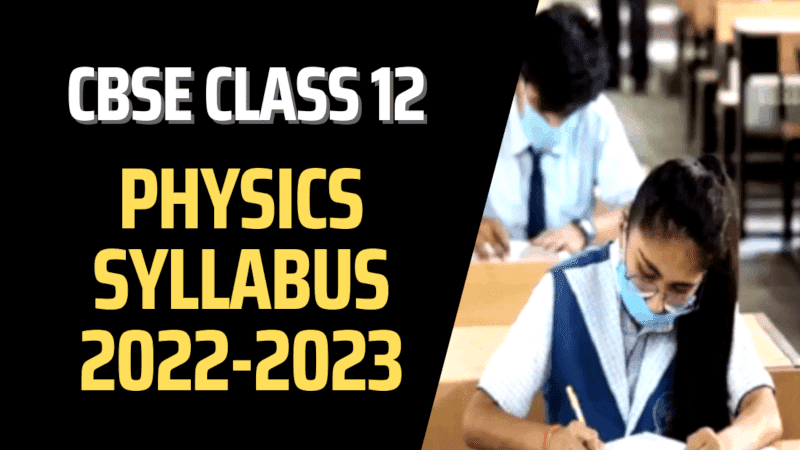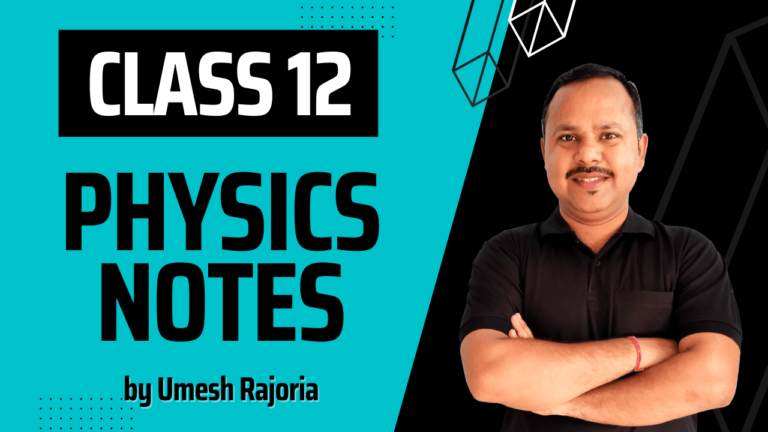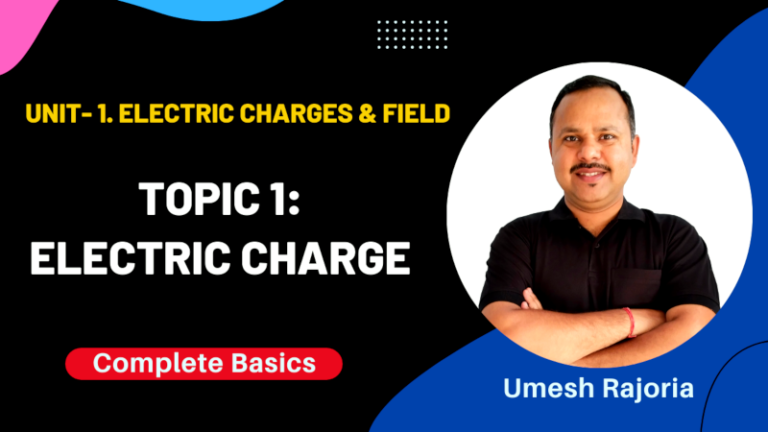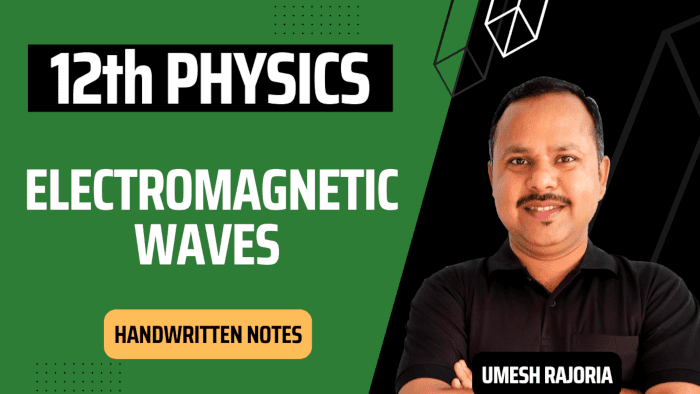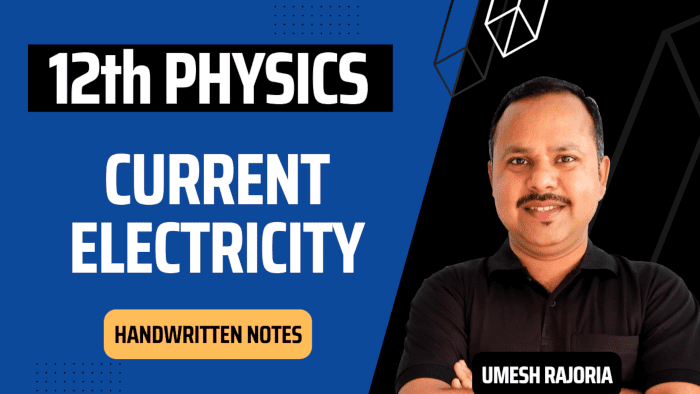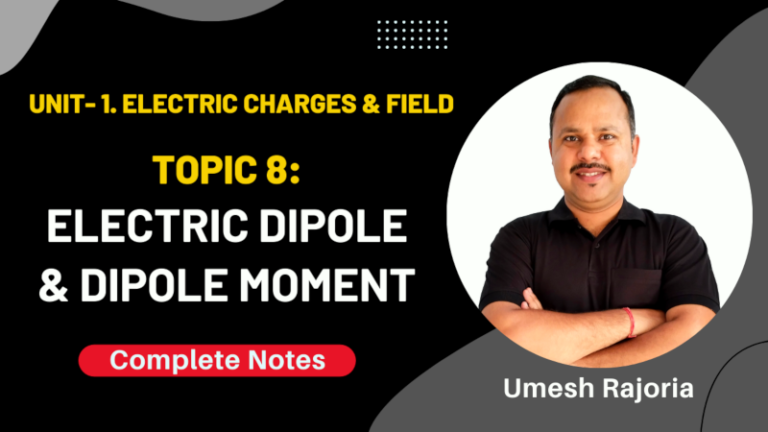Hello students,
In this article, we have included all the units of the class 12 physics syllabus with mark distribution, question paper design, and the practical exam syllabus with mark distribution.
Physics is a very vast subject, and students who are preparing for the competitive exams must go through the syllabus for classes 12th and 11th.
The syllabus will help the students to check the completed portion and set their study timetable.
CBSE Class 12 Physics Syllabus 2022-23 is given below:
Theory:


Students can download the full syllabus in PDF from the following link:


CBSE Class 12 Physics Syllabus 2022-23:
Unit I: Electrostatics 26 Periods
Chapter–1: Electric Charges and Fields
Electric charges, Conservation of charge, Coulomb’s law-force between twopoint charges, forces between multiple charges; superposition principle and continuous charge distribution.
Electric field, electric field due to a point charge, electric field lines, electric dipole, electric field due to a dipole, torque on a dipole in uniform electric field.
Electric flux, statement of Gauss’s theorem and its applications to find field due to infinitely long straight wire, uniformly charged infinite plane sheet and uniformly charged thin spherical shell (field inside and outside).
Chapter–2: Electrostatic Potential and Capacitance
Electric potential, potential difference, electric potential due to a point charge, a dipole and system of charges; equipotential surfaces, electrical potential energy of a system of two-point charges and of electric dipole in an electrostatic field.
Conductors and insulators, free charges and bound charges inside a conductor. Dielectrics and electric polarization, capacitors and capacitance, combination of capacitors in series and in parallel, capacitance of a parallel plate capacitor with and without dielectric medium between the plates, energy stored in a capacitor (no derivation, formulae only).
Unit II: Current Electricity (18 Periods)
Electric current, flow of electric charges in a metallic conductor, drift velocity, mobility and their relation with electric current; Ohm’s law, V-I characteristics (linear and non-linear), electrical energy and power, electrical resistivity and conductivity, temperature dependence of resistance, Internal resistance of a cell, potential difference and emf of a cell, combination of cells in series and in parallel, Kirchhoff’s rules, Wheatstone bridge.
Unit III: Magnetic Effects of Current and Magnetism (25 Periods)
Chapter–4: Moving Charges and Magnetism
Concept of magnetic field, Oersted’s experiment.
Biot – Savart law and its application to current carrying circular loop.
Ampere’s law and its applications to infinitely long straight wire. Straight solenoid (only qualitative treatment), force on a moving charge in uniform magnetic and electric fields.
Force on a current-carrying conductor in a uniform magnetic field, force between two parallel current-carrying conductors-definition of ampere, torque experienced by a current loop in uniform magnetic field; Current loop as a magnetic dipole and its magnetic dipole moment, moving coil galvanometerits current sensitivity and conversion to ammeter and voltmeter.
Chapter–5: Magnetism and Matter
Bar magnet, bar magnet as an equivalent solenoid (qualitative treatment only), magnetic field intensity due to a magnetic dipole (bar magnet) along its axis and perpendicular to its axis (qualitative treatment only), torque on a magnetic dipole (bar magnet) in a uniform magnetic field (qualitative treatment only), magnetic field lines.
Magnetic properties of materials- Para, dia and ferro- magnetic substances with examples, Magnetization of materials, effect of temperature on magnetic properties.
Unit IV: Electromagnetic Induction and Alternating Currents (24 Periods)
Chapter–6: Electromagnetic Induction
Electromagnetic induction; Faraday’s laws, induced EMF and current; Lenz’s Law, Self and mutual induction.
Chapter–7: Alternating Current
Alternating currents, peak and RMS value of alternating current/voltage; reactance and impedance; LCR series circuit (phasors only), resonance, power in AC circuits, power factor, wattless current. AC generator, Transformer.
Unit V: Electromagnetic waves (04 Periods)
Chapter–8: Electromagnetic Waves
Basic idea of displacement current, Electromagnetic waves, their characteristics, their transverse nature (qualitative idea only). Electromagnetic spectrum (radio waves, microwaves, infrared, visible, ultraviolet, X-rays, gamma rays) including elementary facts about their uses.
Unit VI: Optics (30 Periods)
Chapter–9: Ray Optics and Optical Instruments
Ray Optics: Reflection of light, spherical mirrors, mirror formula, refraction of light, total internal reflection and optical fibers, refraction at spherical surfaces, lenses, thin lens formula, lens maker’s formula, magnification, power of a lens, combination of thin lenses in contact, refraction of light through a prism.
Optical instruments: Microscopes and astronomical telescopes (reflecting and refracting) and their magnifying powers.
Chapter–10: Wave Optics
Wave optics: Wave front and Huygen’s principle, reflection and refraction of plane wave at a plane surface using wave fronts. Proof of laws of reflection and refraction using Huygen’s principle. Interference, Young’s double slit experiment and expression for fringe width (No derivation final expression only), coherent sources and sustained interference of light, diffraction due to a single slit, width of central maxima (qualitative treatment only).
Unit VII: Dual Nature of Radiation and Matter (08 Periods)
Chapter–11: Dual Nature of Radiation and Matter
Dual nature of radiation, Photoelectric effect, Hertz and Lenard’s observations; Einstein’s photoelectric equation-particle nature of light.
Experimental study of photoelectric effect
Matter waves-wave nature of particles, de-Broglie relation.
Unit VIII: Atoms and Nuclei (15 Periods)
Chapter–12: Atoms
Alpha-particle scattering experiment; Rutherford’s model of atom; Bohr model of hydrogen atom, Expression for radius of nth possible orbit, velocity and energy of electron in his orbit, of hydrogen line spectra (qualitative treatment only).
Chapter–13: Nuclei
Composition and size of nucleus, nuclear force
Mass-energy relation, mass defect; binding energy per nucleon and its variation with mass number; nuclear fission, nuclear fusion.
Unit IX: Electronic Devices (10 Periods)
Chapter–14: Semiconductor Electronics: Materials, Devices and Simple Circuits
Energy bands in conductors, semiconductors and insulators (qualitative ideas only) Intrinsic and extrinsic semiconductors- p and n type, p-n junction
Semiconductor diode – I-V characteristics in forward and reverse bias, application of junction diode -diode as a rectifier.
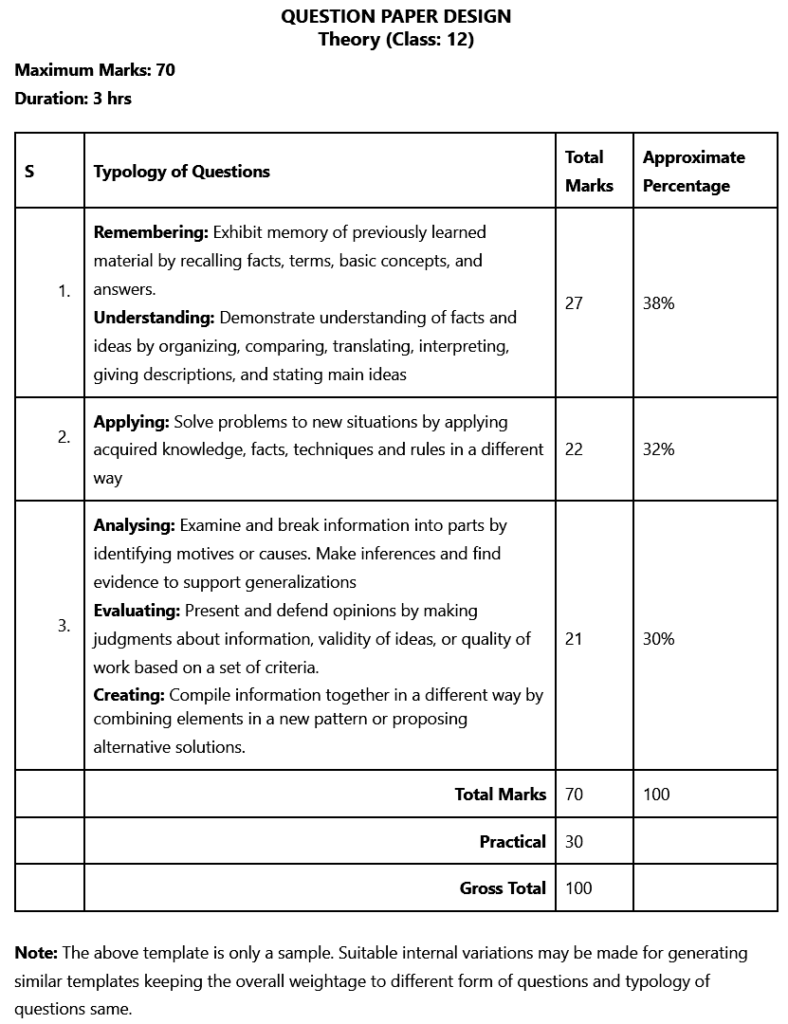

Practical Evaluation Scheme:
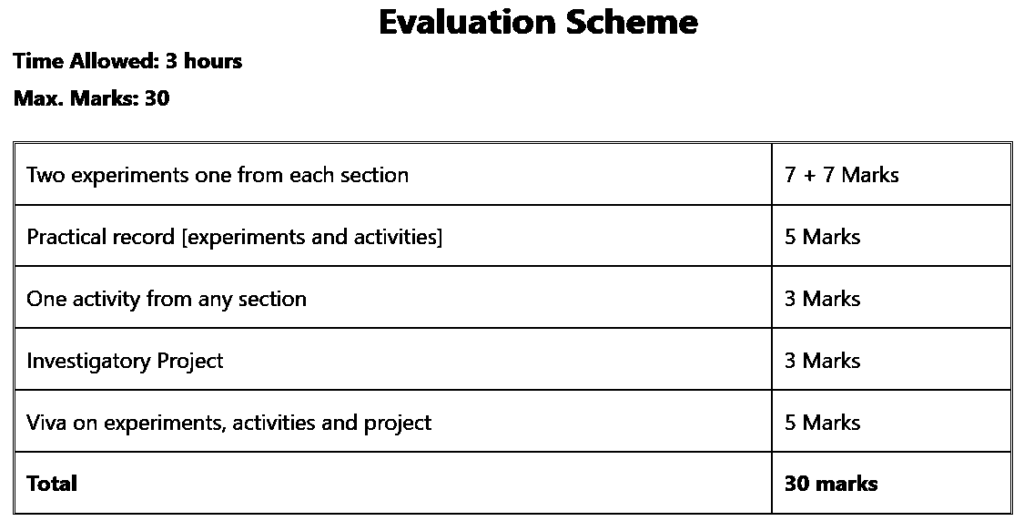

Section-A
Experiments
- To determine resistivity of two / three wires by plotting a graph for potential difference versus current.
- To find resistance of a given wire / standard resistor using metre bridge.
- To verify the laws of combination (series) of resistances using a metre bridge.
OR
To verify the laws of combination (parallel) of resistances using a metre bridge.
- To determine resistance of a galvanometer by half-deflection method and to find its figure of merit.
- To convert the given galvanometer (of known resistance and figure of merit) into a voltmeter of desired range and to verify the same.
OR
To convert the given galvanometer (of known resistance and figure of merit) into an ammeter of desired range and to verify the same.
- To find the frequency of AC mains with a sonometer.
Activities
- To measure the resistance and impedance of an inductor with or without iron core.
- To measure the resistance, voltage (AC/DC), current (AC) and check continuity of a given circuit using multimeter.
- To assemble a household circuit comprising three bulbs, three (on/off) switches, a fuse and a power source.
- To assemble the components of a given electrical circuit.
- To study the variation in potential drop with length of a wire for a steady current.
- To draw the diagram of a given open circuit comprising at least a battery, resistor/rheostat, key, ammeter and voltmeter. Mark the components that are not connected in proper order and correct the circuit and also the circuit diagram.
Section-B
Experiments
- To find the value of v for different values of u in case of a concave mirror and to find the focal length.
- To find the focal length of a convex mirror, using a convex lens.
- To find the focal length of a convex lens by plotting graphs between u and v or between 1/u and 1/v.
- To find the focal length of a concave lens, using a convex lens.
- To determine angle of minimum deviation for a given prism by plotting a graph between angle of incidence and angle of deviation.
- To determine refractive index of a glass slab using a travelling microscope.
- To find refractive index of a liquid by using convex lens and plane mirror.
- To find the refractive index of a liquid using a concave mirror and a plane mirror.
- To draw the I-V characteristic curve for a p-n junction diode in forward bias and reverse bias.
Activities
- To identify a diode, an LED, a resistor and a capacitor from a mixed collection of such items
- Use of multimeter to see the unidirectional flow of current in case of a diode and an LED and check whether a given electronic component (e.g., diode) is in working order.
- To study effect of intensity of light (by varying distance of the source) on an LDR.
- To observe refraction and lateral deviation of a beam of light incident obliquely on a glass slab.
- To observe diffraction of light due to a thin slit.
- To study the nature and size of the image formed by a (i) convex lens, (ii) concave mirror, on a screen by using a candle and a screen (for different distances of the candle from the lens/mirror).
- To obtain a lens combination with the specified focal length by using two lenses from the given set of lenses.
Suggested Investigatory Projects
- To study various factors on which the internal resistance/EMF of a cell depends.
- To study the variations in current flowing in a circuit containing an LDR because of a variation in
the power of the incandescent lamp, used to ‘illuminate’ the LDR (keeping all the lamps at a fixed distance).
the distance of a incandescent lamp (of fixed power) used to ‘illuminate’ the LDR. - To find the refractive indices of (a) water (b) oil (transparent) using a plane mirror, an equi convex lens (made from a glass of known refractive index) and an adjustable object needle.
- To investigate the relation between the ratio of (i) output and input voltage and (ii) number of turns in the secondary coil and primary coil of a self-designed transformer.
- To investigate the dependence of the angle of deviation on the angle of incidence using a hollow prism filled one by one, with different transparent fluids.
- To estimate the charge induced on each one of the two identical styrofoam (or pith) balls suspended in a vertical plane by making use of Coulomb’s law.
- To study the factor on which the self-inductance of a coil depends by observing the effect of this coil, when put in series with a resistor/(bulb) in a circuit fed up by an A.C. source of adjustable frequency.
- To study the earth’s magnetic field using a compass needle -bar magnet by plotting magnetic field lines and tangent galvanometer.
For interesting Videos of Physics follow our YouTube Channel “PHYSICS WITH UMESH RAJORIA“
Hello Students,
Physics is the most crucial subject for all the students of class 11th, 12th and also for the students who are preparing for NEET or JEE. Physics is very important to understand many higher level concepts, which are derived from the concepts that we learn in class 11th and 12th.
So better understanding of all the concepts in physics is very necessary, not only to get good marks in physics exam but also to learn physics more effectively.
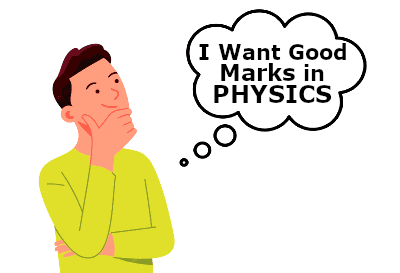

Myself Umesh Rajoria and I am a Physics teacher. I have 15 years teaching experience of physics.
You will be happy to know that i have prepared class 12 physics notes according to the latest NCERT syllabus for CBSE and other state board students.
👉These class 12 Physics notes help the students to understand the concept of Physics easily and retain the formulas and derivations for a longer time.
👉All the diagrams, formulas, derivations and solved numerical are included in these Physics Notes . These notes will be very useful during the preparation of 12th board exams and save most of the time of the students.
Get Physics Chemistry & Biology Notes
- 50000+ Students have Ordered so far !
- ⭐⭐⭐⭐⭐ 9.7/10 Average Rating
- Unlimited Access
Grab Everything Now At lowest Price
Just Pay ₹ 99/-
Benefits of Getting Notes e-Books
- Notes covers complete syllabus of Physics Chemistry & Biology for class 10, 11, 12 and NEET/JEE.
- Written in clean and readable handwriting.
- Revised every year with updated syllabus and exam pattern.
- It can save your time and cost which you spend for individual subject coaching.
- Notes are also beneficial at the time of revision.
- Notes are properly indexed with page numbers.
- Special Focus on the topics which carry more weight in exams.


